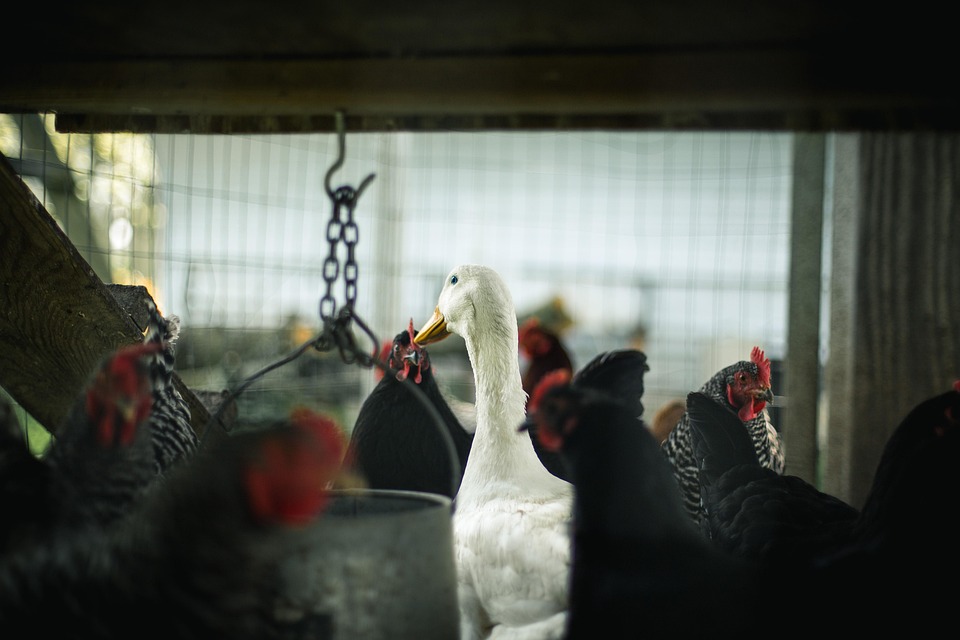## Sowing Seeds of Change: How Sustainable Farming Practices are Reshaping Agriculture
The early morning light peeked through the trees, casting dappled shadows on the vibrant green crops that surrounded me. As I knelt down to plant a row of heirloom tomatoes, a chorus of birds chirped joyously above, harmonizing with the gentle rustling of leaves in the breeze. This was not merely a routine; it was a celebration of nature and the diligent, love-filled labor that goes into sustainable farming. Every seed I planted represented not just a harvest to come, but a commitment to healing the earth and fostering biodiversity. While the world around us faces immense challenges, sustainable farming practices are steadily reshaping the agricultural landscape, sowing the seeds of change both literally and metaphorically.
### The Need for Change
With climate change, industrial agriculture’s unsustainable practices, and a global population on the rise, the need for a paradigm shift in how we approach farming has never been more urgent. Conventional practices often lead to soil degradation, water scarcity, and loss of biodiversity. In contrast, sustainable farming focuses on creating systems that not only produce food but also enhance the ecosystem. Through crop rotation, organic farming, permaculture, and agroforestry, sustainable practices promote long-term agricultural viability while nurturing the planet.
### A Holistic Approach to Farming
Sustainable farming is like embracing a lifestyle of harmony—where every element is interdependent and benefits not just the farmer but the entire ecosystem. Here are some essential components of a sustainable agricultural system:
1. **Soil Health**: The foundation of any thriving farm is healthy soil. Practices like cover cropping, composting, and reduced tillage contribute to nutrient-rich soils that support robust plant growth and sequester carbon.
2. **Biodiversity**: Diverse crops create a balanced ecosystem. Planting a variety of species helps create resilient agricultural systems that can withstand pests and changing climate conditions.
3. **Water Conservation**: Sustainable farming uses smart irrigation systems and rainwater harvesting techniques to ensure minimal water waste. Techniques such as drip irrigation enhance efficiency while protecting essential water resources.
4. **Natural Pest Management**: By attracting beneficial insects and utilizing crop rotation strategies, sustainable farmers can reduce the need for synthetic pesticides. Maintaining biodiversity helps keep pests under control naturally.
5. **Community Engagement**: Sustainable farming encourages community involvement, whether through local farmer markets, educational workshops, or community-supported agriculture (CSA) programs, fostering relationships among neighbors.
### Reimagining Traditional Practices
Sustainable farming breathes new life into time-honored agricultural methodologies. By reexamining age-old practices, modern farmers can incorporate forgotten wisdom into their sustainable endeavors. For example:
– **Permaculture**: This design philosophy mimics natural ecosystems by creating self-sustaining agricultural systems. It emphasizes permaculture zones that are strategically designed to minimize energy expenditure and maximize yield.
– **Agroforestry**: Combining agriculture with forestry, agroforestry promotes biodiversity while increasing crop yields. By integrating trees into crop systems, farmers can enhance soil health and provide habitats for wildlife.
– **Regenerative Agriculture**: This innovative approach goes beyond sustainability, aiming to restore ecosystems. Techniques include rotational grazing and no-till practices designed to regenerate the land and foster carbon sequestration.
### The Culinary Revolution
Sustainable farming does not merely reshape how we grow food; it also transforms what we eat. The farm-to-table movement, which champions fresh, locally sourced ingredients, is at the heart of this culinary revolution. Restaurants and home chefs alike are recognizing the importance of seasonal, organic produce, enhancing culinary experiences while supporting local economies.
Locally sourced ingredients often carry superior flavor profiles and nutritional benefits. Chefs are increasingly embracing this trend, designing menus that change with the seasons. This culinary shift reinforces a connection to the land and fosters a deeper appreciation for the produce grown sustainably.
### Thriving in the Urban Jungle
Sustainable farming is not confined to rural landscapes; urban areas are budding with opportunities for green growth! Community gardens, rooftop farms, and vertical gardens are sprouting in cities, where residents are reclaiming food sovereignty. This urban farming movement empowers individuals to grow their own food, reducing reliance on industrial agriculture and contributing to local ecosystems.
Community gardens serve as vibrant hubs for education and collaboration, where neighbors come together to learn, share resources, and celebrate the art of growing food. Urban agriculture not only beautifies neighborhoods but also promotes mental well-being and social connectivity.
### Pro Tips for Sustainable Farming Enthusiasts
If you’re eager to dive into sustainable agriculture, consider these pro tips to ensure a flourishing garden or farm:
1. **Start Small**: Whether you’re growing vegetables in your backyard or initiating a community project, begin with a small plot of land. This allows you to experiment and learn without feeling overwhelmed.
2. **Embrace Diversity**: Mix different crops in your garden; this enhances resilience against pests and diseases. Consider companion planting, where specific plants work harmoniously together.
3. **Utilize Organic Practices**: Avoid synthetic chemicals. Invest in organic seeds and natural fertilizers like compost or well-rotted manure to promote soil health.
4. **Practice Crop Rotation**: Switch the types of crops you grow in each plot every season to prevent soil depletion and reduce pest infestations.
5. **Engage with Your Community**: Connect with local farmers, attend workshops, and join local gardening clubs. Sharing knowledge and resources fosters a stronger sustainable agriculture network.
6. **Learn as You Grow**: Gardening is an ongoing learning experience. Keep a journal to track what works and what doesn’t, and don’t hesitate to adapt your techniques.
### Celebrating the Future
The movement towards sustainable farming is infectious; it sparks a sense of optimism and community. People are beginning to understand that we hold the power to reshape the future of agriculture. By sowing the seeds of change through sustainable practices, we are cultivating not only healthier crops but also a healthier planet.
In conclusion, sustainable farming offers a visionary pathway, transforming our relationship with the land and each other. With every seed we plant, we are nurturing hope and redefining agriculture for future generations. The joy found in watching a seed grow, nourished by the earth’s wisdom, is a testament to our capacity to work in harmony with nature. So grab your gardening gloves, embrace the earth, and be a part of this vibrant movement—every small action counts!



